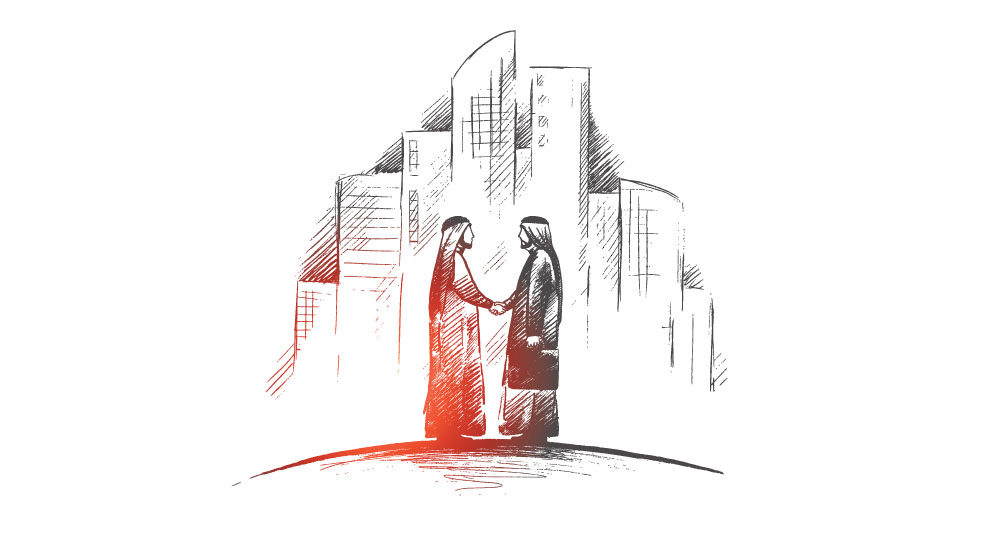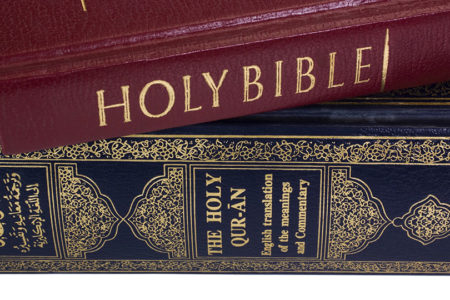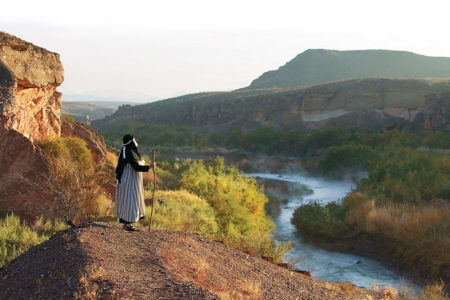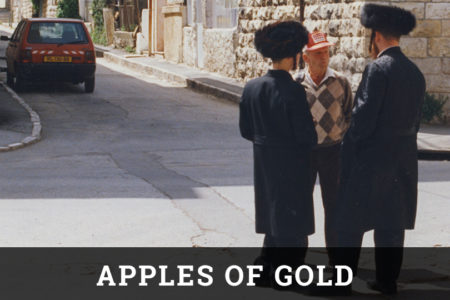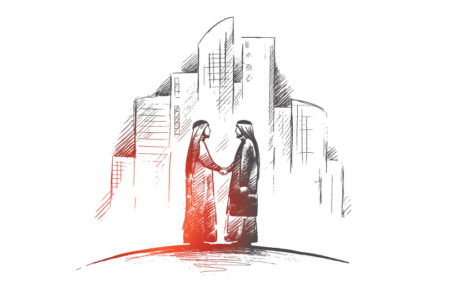The Star and the Crescent
Jews and Arabs have lived as neighbors for nearly three thousand years. The entrance of the sons of Isaac into the land of the sons of Ishmael may go back as far as the days of King Solomon. According to many popular traditions, when the Queen of Sheba returned from her visit to King Solomon (1 Ki. 10), a number of Israelite priests and laymen accompanied her. The land of Sheba was probably in the southern part of the Arabian Peninsula. The Jewish presence in Arabia was undoubtedly increased by refugees fleeing there from the destruction of Jerusalem in 586 B.C. and again in 70 A.D.
During the early centuries of the Christian, era, even more Jews lived throughout Arabia. One of them, Dhu Nuwas, was the king of a large monarchy in Yamen (517–525 A.D.). Many other Jews were active in the caravan trade route that crossed the deserts of these Arab peoples. These biblical Ishmaelites and Midianites were involved in tribal pagan religions marked by idolatry and centered on the veneration of the black stone housed in the Kaba in Mecca.
From one of these desert tribes a man emerged in the early seventh century whose message altered the face of the Middle East and affected the history of Judaism and Christianity in a most significant manner. Muhammad, of the tribe of Quraysh in Mecca, claimed to have received a revelation that God (Allah) was one and that he was to be Allah’s messenger of that truth. After gathering his first converts from among his family members and close friends, Muhammad encountered severe opposition, so much so that he had to flee to the town of Medina. This flight, or Hejira in Arabic, is now viewed as year one in the Islamic calendar (622 A.D.).
In Medina, Muhammad encountered a large and influential Jewish community. The influence of Judaism on his teaching must have been significant. For example, during this period Muhammad taught that the faithful should pray facing Jerusalem, as Jewish prayers were always directed there. Only later, after the Jews had rejected his message, did he alter the direction for prayer to Mecca. Muhammad also taught his followers to fast on the tenth day of Tishri the same day as the Jewish fast of Yom Kippur. Later, this fast was expanded to include the entire month of Ramadan. Muhammad’s followers abstained from pork and circumcised their sons, standard Jewish practices since biblical days.
Muhammad also accepted the Jewish prophets Adam, Noah, Abraham, Moses, and David, as well as the “prophet” Jesus, although he strongly rejected His deity. Muhammad added that he was himself the “seal” of prophecy—God’s final messenger. While accepting the Scriptures of Jews and Christians, Muhammad’s “revelations,” embodied in the Koran, became the authoritative scriptures for his faithful followers. These followers were called Muslims, from the Arabic word Islam, meaning submission to the one God.
Apparently Muhammad thought that Jews would accept his message of a pure monotheism, but the rabbis ridiculed his illiteracy and his confusion of biblical traditions. Furthermore, the Jewish people simply could not accept a non-Israelite as God’s “seal” of prophecy. When the Jews of Medina rejected him and his message, Muhammad turned on them with a vengeance. Then followed the expulsion and exile of two Jewish tribes from Medina, as well as the extermination of a third. Finally, Muhammad and his fanatical adherents massacred most of the remaining Jews of Northern Arabia and forcibly evicted the rest. The only Jewish community that remained was in Yemen, which continued to 1950, when nearly all the Yemenite Jews were airlifted to Israel in “Operation Magic Carpet.”
Although Muhammad’s opposition to Jews and Christians who rejected him was fierce, Islam actually developed a more tolerant attitude toward them than toward the pagans. Because Jews and Christians based their religion on Scriptures, they were considered “People of the Book” and given special treatment.
After Muhammad’s death in 630, his successors spread the message of Islam throughout the Middle East and North Africa and even into Spain. During this remarkable period of conquest, the messengers of Islam encountered hundreds of communities of Jews and Christians. Because they were viewed as “People of the Book,” these monotheists were not forced to accept Islam but were required to live under specific restrictions in return for “protection.” The Pact of Omar outlines these restrictions.
The dhimmis (term for Jews and Christians living under Islamic protection) had to pay an additional poll tax, sometimes very high. They were not permitted to carry arms or ride a horse in the presence of a Muslim. Jews were forbidden to build new synagogues or repair old ones. They had to wear distinctive clothing and were not allowed to engage in public religious processions. Finally, they could not proselytize a Muslim to their faith. Consequently, even though they were allowed to continue as Jews, they lived as second class citizens under great social pressure. In many Muslim countries, these restrictions continue to this very day.
In spite of these harsh constraints, the majority of world Jewry lived a tolerable existence in Muslim lands for hundreds of years. In many ways, their existence as inferior citizens in Muslim lands was more bearable than the dark night of pogroms, expulsions, and inquisitions that characterized their plight in many so-called Christian countries during the Middle Ages.
Large communities of Jews continued to live in Egypt, Algeria, Morocco, Iraq, Iran, and other Muslim countries until the establishment of the state of Israel in 1948. The vast majority of Jews emigrated from these lands in the late 1940s and early 1950s. They formed the nucleus of a vibrant Sephardic community in Israel, and their children now actually outnumber their Ashkenazic or European Jewish brethren in their new homeland, Eretz Yisrael—the state of Israel.
There is an important contemporary lesson to be learned from this brief historic overview. We cannot fully comprehend the Arab-Israeli conflict unless we understand the attitude of Islam toward the Jewish people. The land of Israel, or Palestine as it was called by the Romans and Byzantines, was conquered and ruled by Muslims from the 7th to the 20th century. The only interruption came when the “Christian” Crusaders ruled the land for less than a hundred years. Islam finds it unacceptable that this land, originally conquered for Allah by his followers, is now ruled over by Jews—a people who are supposed to be inferior and subservient, according to the Koran.
This historic reality, which Muslims find impossible to acknowledge, is the real key to understanding the impasse that exists in Israel today. The Arab countries, predominantly Muslim, refuse to accept a foreign, Jewish presence in a land that is supposed to be part of the “World of Islam.”
The modern rise of a more fanatical Islam only heightens the tension of this impasse—an impasse that ultimately can be repaired only by the coming of the Messiah, the Savior of both Isaac and Ishmael’s sons. He is the one who can finally reconcile them to each other by reconciling each to his Heavenly Father.
